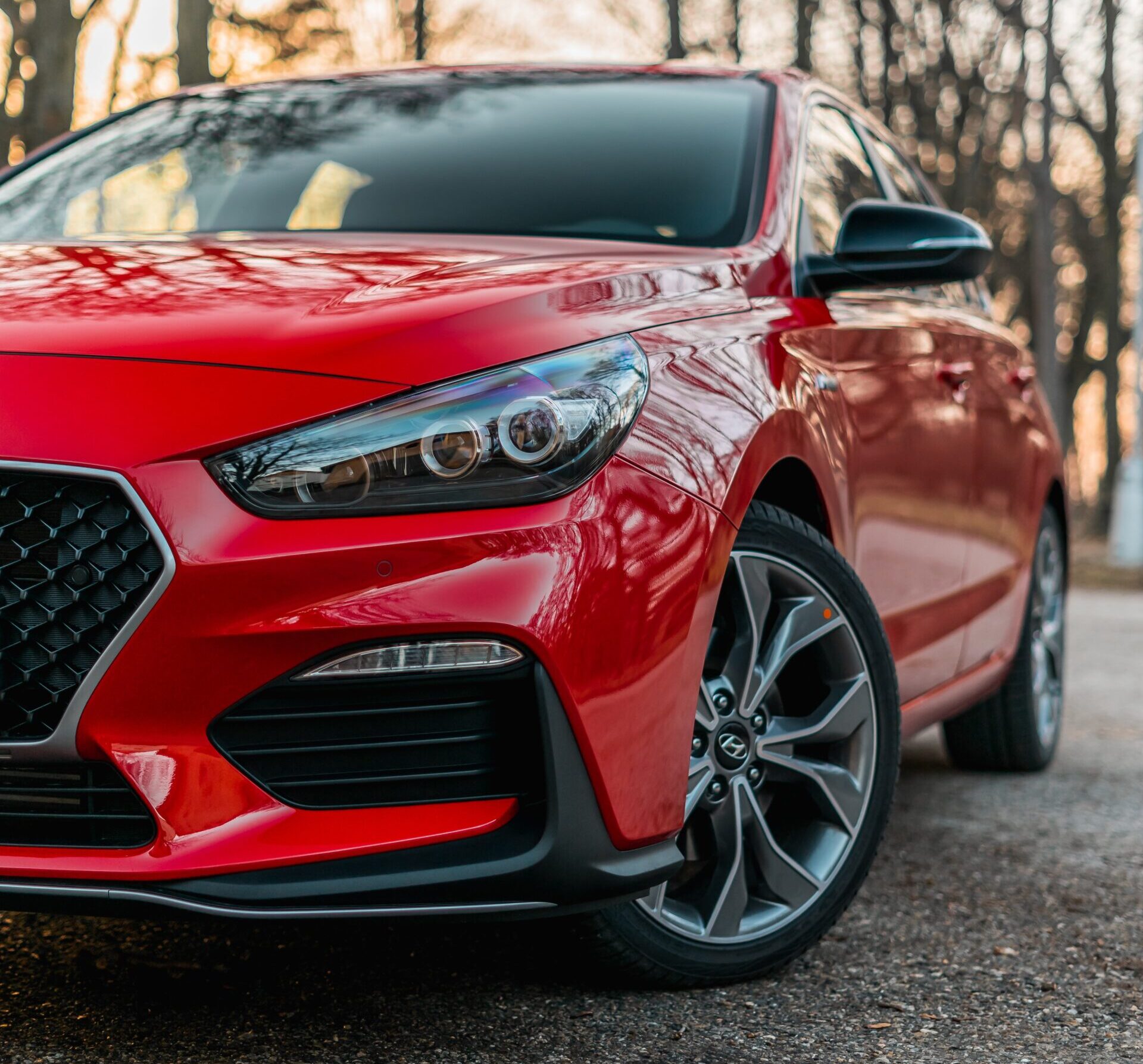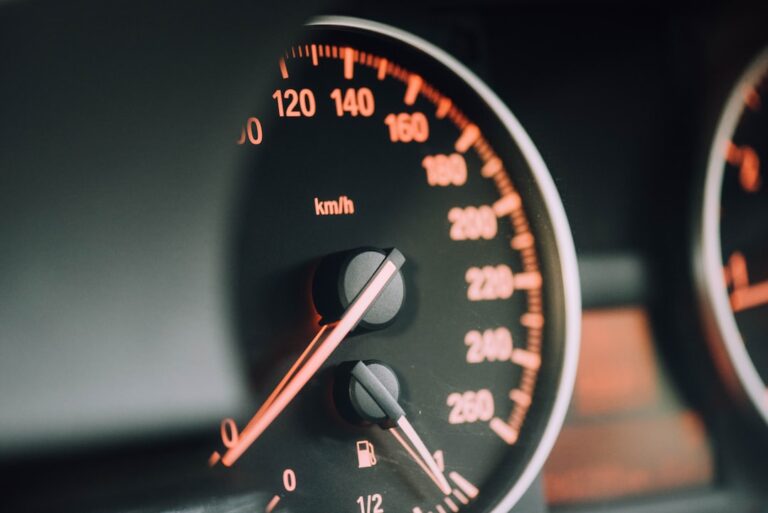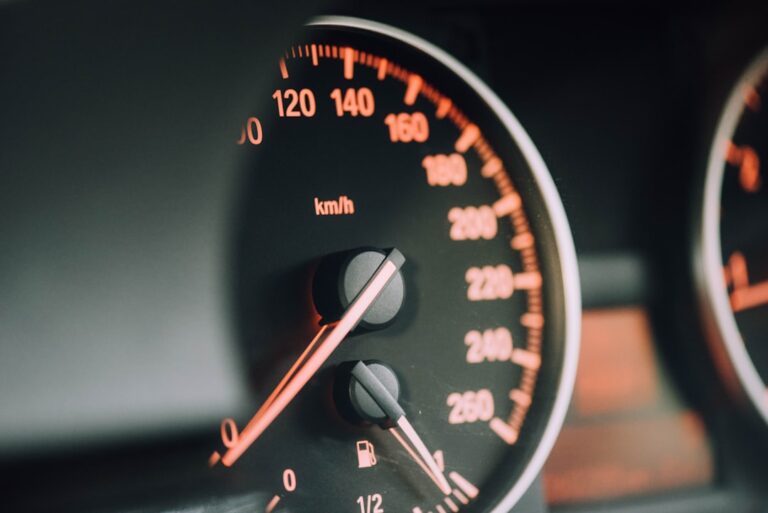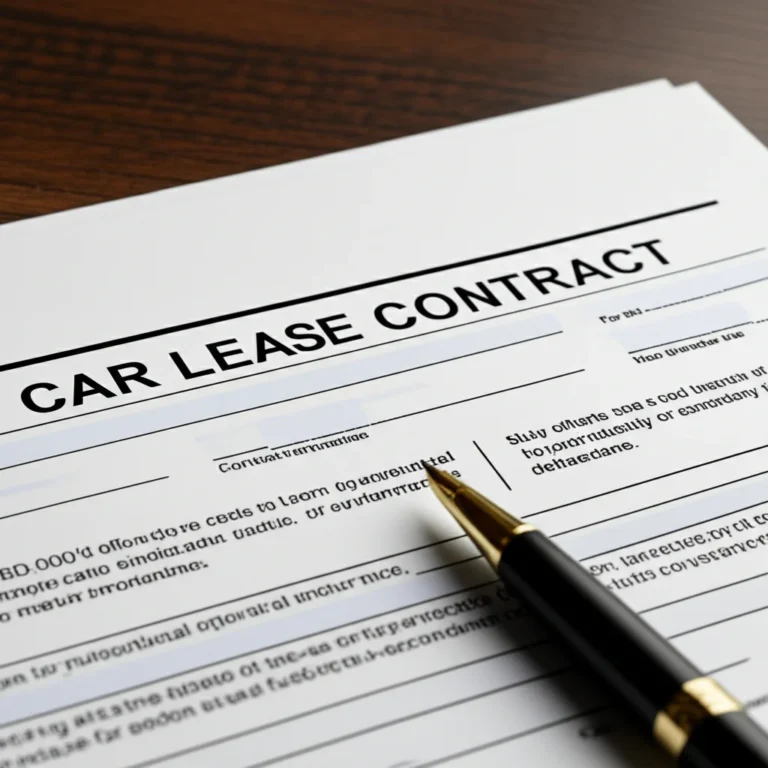Support our educational content for free when you purchase through links on our site. Learn more
How Do You Calculate the Interest Rate on a Lease? 7 Steps (2025) 🔍
Leasing a car can feel like decoding a secret language — especially when it comes to understanding the interest rate. Unlike a traditional loan, lease interest is often hidden behind a mysterious number called the money factor, leaving many drivers scratching their heads. Did you know that multiplying this tiny decimal by 2,400 reveals the actual APR you’re paying? That’s just one of the insider tricks we’ll reveal to help you master lease calculations and avoid costly surprises.
In this article, we’ll break down how to calculate the interest rate on a lease step-by-step, explain key terms like residual value and capitalized cost, and share expert tips on negotiating better rates. Plus, we’ll compare lease interest to loan interest, show real-life examples, and guide you to the best online tools to crunch the numbers yourself. Ready to become a lease interest rate pro and drive away with confidence? Let’s get started!
Key Takeaways
- Lease interest rates are expressed as a money factor, a decimal that converts to APR by multiplying by 2,400.
- Your monthly lease payment includes interest on both depreciation and residual value, unlike a loan.
- Credit score, lease term, and vehicle type heavily influence your lease interest rate.
- Negotiating the capitalized cost and asking explicitly for the money factor can save you money.
- Use trusted online calculators from brands like Toyota and BMW to estimate your payments.
- Understanding lease interest helps you decide whether leasing or financing is the smarter choice for your budget and lifestyle.
👉 Shop popular lease deals:
- Toyota Leases: TrueCar Toyota Lease Deals | Toyota Official Website
- BMW Leases: TrueCar BMW Lease Deals | BMW Official Website
- Honda Leases: TrueCar Honda Lease Deals | Honda Official Website
Table of Contents
- ⚡️ Quick Tips and Facts About Lease Interest Rates
- 🔍 Understanding the Basics: What Is the Interest Rate on a Lease?
- 📜 The History and Evolution of Lease Interest Rates
- 🧮 How to Calculate the Interest Rate on a Lease: Step-by-Step Guide
- 💡 Key Lease Terms That Affect Your Interest Rate
- 📊 Comparing Lease Interest Rates vs. Loan Interest Rates: What’s the Difference?
- 🔧 Factors That Influence Your Lease Interest Rate
- 💸 How to Negotiate a Better Interest Rate on Your Lease
- 🧾 Understanding Lease APR Disclosures and What Dealers Don’t Tell You
- 📉 Impact of Interest Rate on Total Lease Cost and Residual Value
- 🛠️ Tools and Calculators to Help You Figure Out Lease Interest Rates
- 📚 Real-Life Examples: Calculating Interest Rate on Popular Car Leases
- 🚦 When to Choose Leasing vs. Financing Based on Interest Rates
- 🎯 Pro Tips from Car Leases™ Experts on Mastering Lease Interest Rates
- 🔚 Conclusion: Mastering Lease Interest Rates for Smarter Car Deals
- 🔗 Recommended Links for Lease Interest Rate Insights
- ❓ Frequently Asked Questions About Lease Interest Rates
- 📑 Reference Links and Resources
⚡️ Quick Tips and Facts About Lease Interest Rates
Before we dive deep into the math jungle, here are some quick nuggets from the Car Leases™ pit crew to get you revved up:
- Lease interest rate ≠ loan interest rate. In leasing, it’s often expressed as a money factor, a decimal number that can be converted to an APR.
- The money factor × 2,400 ≈ APR (annual percentage rate). This quirky formula helps you translate dealer-speak into real-world interest rates.
- Your monthly lease payment includes interest on the depreciation and the residual value of the car.
- Residual value is the estimated worth of the car at lease-end — a key player in calculating your interest cost.
- Down payments, lease term, and credit score all influence the effective interest rate you pay.
- Dealers sometimes hide the money factor in the fine print — always ask for it explicitly!
- Leasing can cost more in interest than financing, but you get a new car every few years and lower monthly payments.
Want to know how to decode the dealer’s secret language and calculate your lease interest rate like a pro? Stick around — we’ll break it down step-by-step. Meanwhile, if you’re wondering how much cash to stash before leasing, check out our detailed guide: How Much Should I Save Before Leasing a Car? 💸 (2025 Guide).
🔍 Understanding the Basics: What Is the Interest Rate on a Lease?
When you lease a car, you’re essentially renting it for a fixed period. The interest rate on a lease is the cost you pay for the privilege of using the car without owning it. Unlike a traditional loan where you borrow money to buy a car, leasing involves paying interest on the depreciation of the vehicle plus the financing cost on the residual value.
What’s Different About Lease Interest?
- Money Factor: Instead of a straightforward APR, leases use a money factor — a decimal number like 0.00125 — to calculate interest.
- Interest on Depreciation + Residual: You pay interest on the difference between the car’s selling price (capitalized cost) and its residual value, plus interest on the residual itself.
- No Equity: Unlike a loan, you don’t build equity in the car; you pay for its use and depreciation.
Think of it like renting a luxury apartment: you pay rent (interest + depreciation), but you don’t own the property. The interest rate is the landlord’s cut for letting you live there.
For more on lease basics, check out our Car Lease Basics category.
📜 The History and Evolution of Lease Interest Rates
Leasing isn’t a new kid on the block. It’s been around since the early 20th century, originally popularized in commercial equipment and real estate. Car leasing took off in the 1950s and 60s as automakers sought ways to boost sales and offer consumers flexibility.
How Interest Rates on Leases Evolved
- Early Days: Interest was often hidden or bundled into payments, with little transparency.
- Money Factor Emerges: Dealers started using the money factor to simplify calculations and mask the APR, making it less obvious to consumers.
- Regulatory Changes: Consumer protection laws and accounting standards (like IFRS 16 and ASC 842) have increased transparency on lease interest rates and disclosures.
- Tech & Tools: Online lease calculators and comparison tools now empower consumers to decode lease interest rates and negotiate better deals.
The evolution reflects a push for greater clarity and fairness — but savvy consumers still need to know how to read between the lines.
🧮 How to Calculate the Interest Rate on a Lease: Step-by-Step Guide
Ready to become a lease interest rate ninja? Here’s the step-by-step breakdown from our Car Leases™ experts.
1. Decoding the Money Factor: The Secret Behind Lease Interest
The money factor is the lease’s way of expressing interest. It’s usually a small decimal number — for example, 0.00125.
- To find the APR equivalent, multiply the money factor by 2,400:
[
\text{APR} = \text{Money Factor} \times 2400
] - Example: 0.00125 × 2400 = 3.0% APR.
This APR is what you’d compare to a loan’s interest rate to understand the cost of financing your lease.
Pro Tip: Always ask the dealer for the money factor. If they only give you the APR, you can reverse-engineer it by dividing by 2,400.
2. Converting Money Factor to APR: Making Sense of the Numbers
Why multiply by 2,400? Because the money factor is based on monthly interest expressed as a fraction of the lease balance, and this conversion annualizes it.
| Money Factor | APR (%) = Money Factor × 2400 |
|---|---|
| 0.00050 | 1.2% |
| 0.00100 | 2.4% |
| 0.00150 | 3.6% |
| 0.00200 | 4.8% |
| 0.00250 | 6.0% |
This table helps you quickly estimate the lease interest rate.
3. Calculating Lease Payments: Interest Rate’s Role
Your monthly lease payment is made up of:
- Depreciation Fee: (Capitalized Cost − Residual Value) ÷ Lease Term
- Finance Fee: (Capitalized Cost + Residual Value) × Money Factor
- Taxes and Fees: Vary by location
The finance fee is essentially the interest portion. The higher the money factor, the more interest you pay monthly.
💡 Key Lease Terms That Affect Your Interest Rate
Understanding these terms will help you decode your lease contract and spot where interest rates hide:
- Capitalized Cost: The negotiated price of the car plus any fees rolled into the lease.
- Residual Value: The estimated value of the car at lease-end — higher residuals mean lower depreciation and often lower interest costs.
- Money Factor: The lease’s interest rate expressed as a decimal.
- Lease Term: The length of the lease in months — longer terms spread out depreciation but may increase interest paid.
- Down Payment / Capitalized Cost Reduction: Money paid upfront to reduce the lease balance and interest.
- Security Deposit: Sometimes required to lower the money factor.
- Mileage Allowance: Exceeding it can increase costs but doesn’t affect interest rate directly.
Knowing these terms helps you negotiate better and avoid surprises.
📊 Comparing Lease Interest Rates vs. Loan Interest Rates: What’s the Difference?
| Aspect | Lease Interest Rate (Money Factor) | Loan Interest Rate (APR) |
|---|---|---|
| Expression | Money factor (decimal), converted to APR | Annual Percentage Rate (APR) |
| What you pay interest on | Depreciation + residual value | Entire loan amount (car price minus down) |
| Ownership | No ownership during lease | Ownership after loan payoff |
| Monthly payment impact | Interest + depreciation | Interest + principal |
| Negotiability | Often less transparent, dealer-controlled | More transparent, banks disclose APR |
Leases often have higher effective interest costs because you pay interest on both depreciation and residual value. Loans charge interest only on the amount borrowed.
🔧 Factors That Influence Your Lease Interest Rate
Your lease interest rate isn’t set in stone. Here’s what can move the needle:
- Credit Score: Higher scores get lower money factors.
- Lease Term: Shorter leases often have lower money factors.
- Vehicle Make and Model: Luxury brands like BMW or Mercedes-Benz often have higher money factors than economy brands like Toyota or Honda.
- Down Payment: Larger upfront payments can reduce the money factor.
- Dealer Incentives: Manufacturers sometimes subsidize lease rates to boost sales.
- Market Conditions: Interest rates fluctuate with the economy and lending environment.
Knowing these helps you strategize your lease negotiation.
💸 How to Negotiate a Better Interest Rate on Your Lease
Negotiating lease interest rates is an art — here’s how to paint a masterpiece:
- Ask for the Money Factor upfront. If it’s not disclosed, politely insist.
- Check your credit score before negotiating; better scores = better rates.
- 👉 Shop around at multiple dealerships and compare money factors.
- Leverage manufacturer lease specials — sometimes they offer rock-bottom money factors.
- Put more money down if you can afford it, but beware of losing money if the car is totaled.
- Consider a shorter lease term to reduce interest paid overall.
- Negotiate the capitalized cost aggressively — a lower price means less interest.
Remember, dealers want to make a profit, but they also want your business. Use knowledge as your turbo boost!
🧾 Understanding Lease APR Disclosures and What Dealers Don’t Tell You
Many dealers won’t volunteer the APR equivalent of the money factor because it makes the interest cost more obvious. Here’s what they might hide:
- Money factor vs. APR: Dealers prefer money factor because it looks smaller and less intimidating.
- Upfront fees: Some fees are rolled into the capitalized cost, increasing your interest payments.
- Security deposits: Paying a refundable deposit can lower your money factor but ties up cash.
- Residual value manipulation: Dealers may set a lower residual to increase monthly payments and interest.
Always ask for a lease worksheet that breaks down capitalized cost, residual value, money factor, and fees. Transparency is your best friend.
📉 Impact of Interest Rate on Total Lease Cost and Residual Value
The interest rate affects the total cost of your lease significantly:
- Higher money factor = higher monthly payments.
- Residual value affects depreciation; a higher residual means less depreciation and lower payments.
- Interest is charged on both the depreciation amount and the residual value, so even a small increase in money factor can add hundreds to your total lease cost.
Here’s a simplified example:
| Money Factor | APR (%) | Monthly Payment (Est.) | Total Interest Paid (36 months) |
|---|---|---|---|
| 0.00100 | 2.4% | $400 | $1,500 |
| 0.00150 | 3.6% | $420 | $2,000 |
| 0.00200 | 4.8% | $440 | $2,500 |
The difference might seem small monthly but adds up over time.
🛠️ Tools and Calculators to Help You Figure Out Lease Interest Rates
Don’t sweat the math — use these handy tools:
- Calculator.net Lease Calculator: Calculate monthly payments or effective interest rates. Try it here
- Edmunds Lease Calculator: Offers detailed breakdowns including money factor and residual value.
- TrueCar Lease Calculator: Great for comparing lease deals on specific models.
- Manufacturer Websites: Many brands like Toyota and BMW provide their own calculators.
These tools help you visualize how changing the money factor or residual affects your payments.
📚 Real-Life Examples: Calculating Interest Rate on Popular Car Leases
Let’s crunch some real numbers from recent popular leases:
| Vehicle | Capitalized Cost | Residual Value | Lease Term (months) | Money Factor | APR (%) | Monthly Payment (Est.) |
|---|---|---|---|---|---|---|
| 2024 Toyota Camry | $30,000 | $18,000 (60%) | 36 | 0.00125 | 3.0% | $400 |
| 2024 BMW 3 Series | $45,000 | $27,000 (60%) | 36 | 0.00200 | 4.8% | $650 |
| 2024 Honda CR-V | $32,000 | $19,200 (60%) | 36 | 0.00150 | 3.6% | $430 |
Example: For the Toyota Camry, the money factor of 0.00125 translates to a 3.0% APR. The monthly payment includes depreciation plus interest calculated using that money factor.
Want to see how your favorite model stacks up? Use manufacturer calculators or check out our Electric Vehicle Leases for the latest EV deals!
🚦 When to Choose Leasing vs. Financing Based on Interest Rates
Here’s the million-dollar question: Should you lease or finance based on interest rates?
| Scenario | Lease Advantage ✅ | Finance Advantage ✅ |
|---|---|---|
| Low interest rates on loans | ❌ Lease interest often higher | ✅ Lower loan APR saves money |
| Want lower monthly payments | ✅ Lease usually cheaper monthly | ❌ Loan payments higher |
| Drive a new car every few years | ✅ Leasing offers flexibility | ❌ Financing ties you longer |
| Build equity in the vehicle | ❌ Leasing builds no equity | ✅ Ownership after loan payoff |
| Tax benefits for business use | ✅ Lease payments often deductible | ✅ Interest on loan may be deductible |
If you find a lease with a low money factor (sub-0.00100), it might beat financing rates. Otherwise, financing could save you money in the long run.
🎯 Pro Tips from Car Leases™ Experts on Mastering Lease Interest Rates
Our team’s insider secrets to getting the best lease interest rates:
- Always negotiate the capitalized cost first; a lower price reduces interest charges.
- Don’t be shy to ask for the money factor and APR equivalent. Transparency is your weapon.
- Check your credit score months before leasing. Fix errors and improve your score to unlock better rates.
- Consider leasing at the end of the model year when dealers offer incentives and lower money factors.
- Use online calculators to test “what-if” scenarios before signing.
- Beware of “zero down” deals that might have inflated money factors to compensate.
- If you’re a business lessee, consult a tax advisor to maximize deductions related to lease interest.
Master these tips, and you’ll be cruising with confidence and savings.
🔚 Conclusion: Mastering Lease Interest Rates for Smarter Car Deals
So, how do you calculate the interest rate on a lease? It all boils down to understanding the money factor, converting it to an APR, and knowing how it fits into your monthly payment calculation. Leasing isn’t just about picking a shiny new car — it’s about decoding the fine print, spotting the hidden interest charges, and negotiating like a pro to get the best deal possible.
We’ve demystified the money factor, shown you how to convert it, and revealed the factors that influence your lease interest rate. Remember, the interest you pay on a lease can sometimes be higher than a loan’s APR because you pay interest on both depreciation and residual value. But the tradeoff? Lower monthly payments and the joy of driving a new car every few years.
If you’re armed with this knowledge, you’ll no longer be at the mercy of dealer jargon or confusing lease contracts. You’ll be the one steering the negotiation, saving money, and cruising away with confidence.
Ready to put these insights into action? Start by checking your credit score, shop around for the best money factor, and use online calculators to test your deals. Leasing can be a fantastic option — just make sure you understand the interest rate game before you sign on the dotted line.
🔗 Recommended Links for Lease Interest Rate Insights
👉 Shop Popular Brands and Lease Calculators:
- Toyota Lease Deals: Toyota Official Website | TrueCar Toyota Lease Deals | Edmunds Toyota Lease Calculator
- BMW Lease Offers: BMW Official Website | TrueCar BMW Lease Deals | Edmunds BMW Lease Calculator
- Honda Lease Specials: Honda Official Website | TrueCar Honda Lease Deals | Edmunds Honda Lease Calculator
- Lease Calculators:
❓ Frequently Asked Questions About Lease Interest Rates
What are the factors that affect the interest rate on a car lease?
Several factors influence the interest rate (money factor) on your lease:
- Credit Score: Higher credit scores typically qualify for lower money factors.
- Lease Term: Shorter leases often have lower money factors.
- Vehicle Type: Luxury or specialty vehicles usually have higher money factors than economy cars.
- Down Payment: Larger upfront payments can reduce the effective interest rate.
- Manufacturer Incentives: Automakers sometimes subsidize lease rates to boost sales.
- Market Conditions: Economic factors and lender policies affect lease interest rates.
Understanding these helps you strategize your lease negotiation and improve your chances of securing a favorable rate.
How does the money factor relate to the interest rate on a lease?
The money factor is the lease industry’s way of expressing the interest rate as a decimal. To convert it to the more familiar APR (annual percentage rate), multiply the money factor by 2,400. For example, a money factor of 0.00125 corresponds to an APR of 3.0%. This APR represents the annualized interest cost embedded in your lease payments.
Can you negotiate the interest rate on a car lease?
✅ Yes! The money factor is often negotiable, especially if you have a strong credit score or shop around multiple dealerships. Always ask the dealer to disclose the money factor and compare it to published manufacturer lease specials. Negotiating the capitalized cost (the car’s price) also indirectly lowers the interest you pay because interest is calculated on the lease balance.
What is the difference between a lease’s interest rate and its money factor, and how do they impact my monthly payments?
- The money factor is a decimal number used in lease calculations, while the interest rate (APR) is the annualized percentage rate equivalent.
- The money factor multiplied by 2,400 gives the APR.
- Both represent the cost of financing the lease, but the money factor is the figure used in the lease payment formula.
- Higher money factors mean higher finance fees and thus higher monthly payments.
- Understanding both helps you compare lease offers and negotiate better terms.
How does the residual value affect the interest paid on a lease?
The residual value is the estimated worth of the car at lease-end. A higher residual value means less depreciation, which reduces the amount you pay interest on. Since interest is charged on the sum of the capitalized cost and residual value multiplied by the money factor, a higher residual can lower your monthly payments and total interest paid.
What’s the difference between the implicit interest rate and the incremental borrowing rate in lease accounting?
- The implicit interest rate is the rate that makes the present value of lease payments equal to the fair value of the leased asset plus initial direct costs. It’s often used by lessors and, if known, by lessees.
- The incremental borrowing rate is the rate a lessee would pay to borrow funds to buy the asset and is used when the implicit rate isn’t known.
- Both rates are critical for lease accounting under standards like IFRS 16 and ASC 842 but can differ from advertised money factors.
📑 Reference Links and Resources
- Calculator.net Lease Calculator — Comprehensive lease payment and interest rate calculator.
- Finquery: Interest Expense Calculation Explained with a Finance Lease — Detailed explanation of lease interest and accounting.
- IFRS 16 Lease Accounting Standard — Official guidance on lease accounting and implicit interest rates.
- ASC 842 Lease Accounting — U.S. GAAP lease accounting standard details.
- Toyota Lease Calculator — Official Toyota tool for lease calculations.
- BMW Lease Calculator — BMW’s official lease payment estimator.
- Honda Lease Calculator — Honda’s official lease calculator.
- TrueCar Lease Calculator — User-friendly lease calculator with market data.





